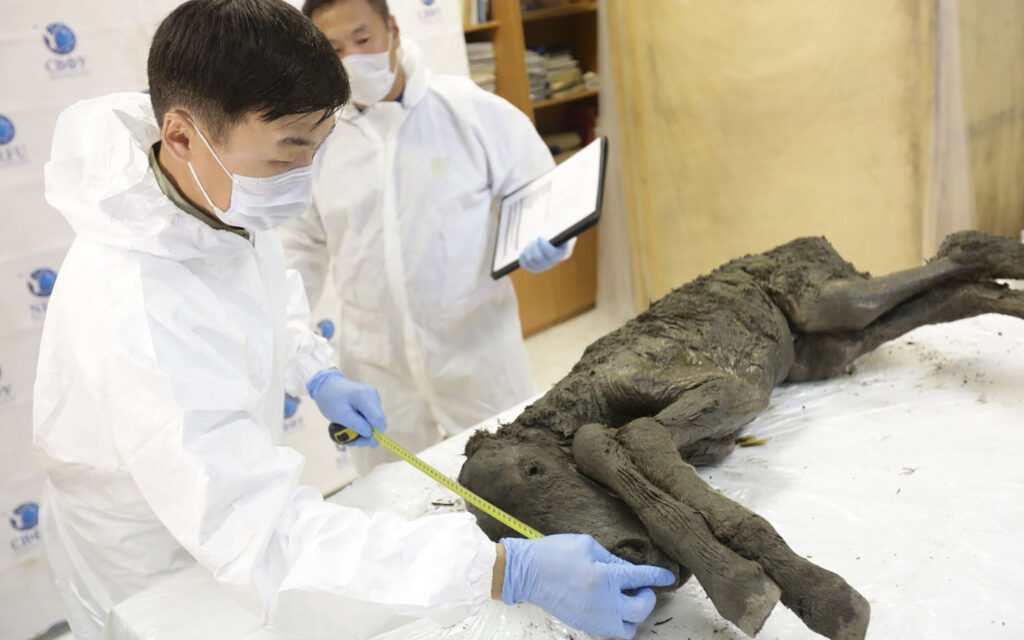Siberian Permafrost Held 40.000-Year-Old Foal Discovered By Researchers
An endangered breed of Lena horse, this two-month-old foal stood 37 inches high at the time of its death. Batagai crater, nicknamed the “Mouth of Hell,” was dug out earlier this month by scientists.
Extinct horses known as Lenskave or Lena horses are a component of the prehistoric foal’s family. Researchers investigating on ancient woolly mammoth remains came found the well preserved child by accident. Natural trap: The animal most likely drowned in a melting ice lake after sliding into a natural trap.

The foal’s dark brown coat, tail, and mane, as well as all of its internal organs, have been maintained perfectly. On its physique, there were no obvious wounds. It was discovered by chance and in perfect shape. An examination of the specimen found in the permafrost revealed that it was an extinct species that had lain there for about 40,000 years.

Locals in the remote Yakutia region believe that this beautiful crater is a “portal to the underworld,” and they refer to it as such. Local scientists believe the Soviets removed the forest that left a rift in the tundra, but climate change is now widening and reshaping the scar. One kilometer long and about a half-mile wide (800 meters) wide, the “mega slump” in which the young horse was buried was around 100 feet (30 meters).

Siberian Yakut horses are the world’s toughest, surviving temperatures of up to minus 60°C (-72°F). Between 30,000 and 40,000 years ago, Yakutia was home to an earlier species of people. Permafrost also preserved the foal’s life. Late Pleistocene fauna with woolly mammoths and Lenskaya horses was significantly different from today since the extinct Lenskaya Horse looks similar to the horses that wander the region today, but are not genetically linked to the modern-day population.”
Check the video below!
